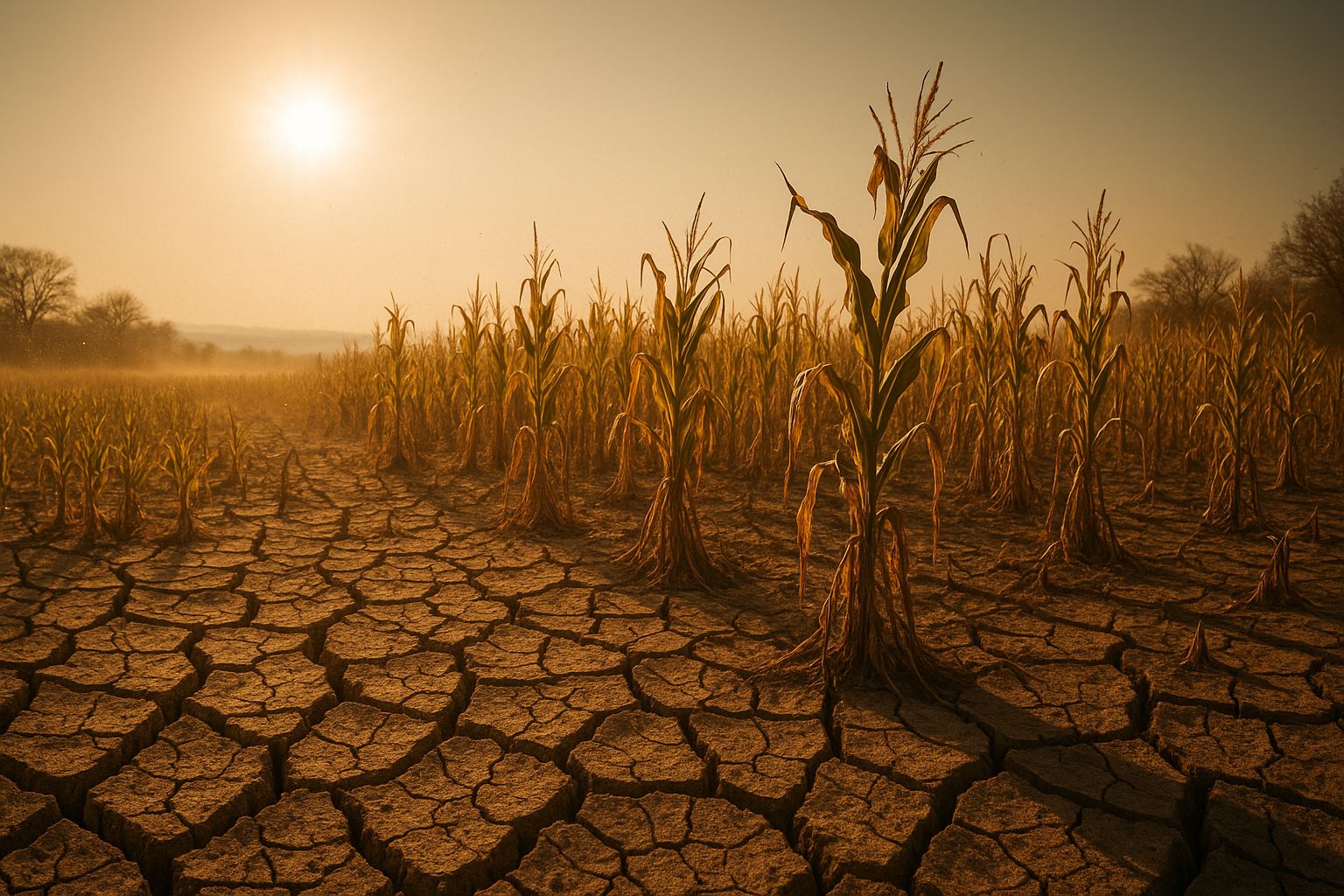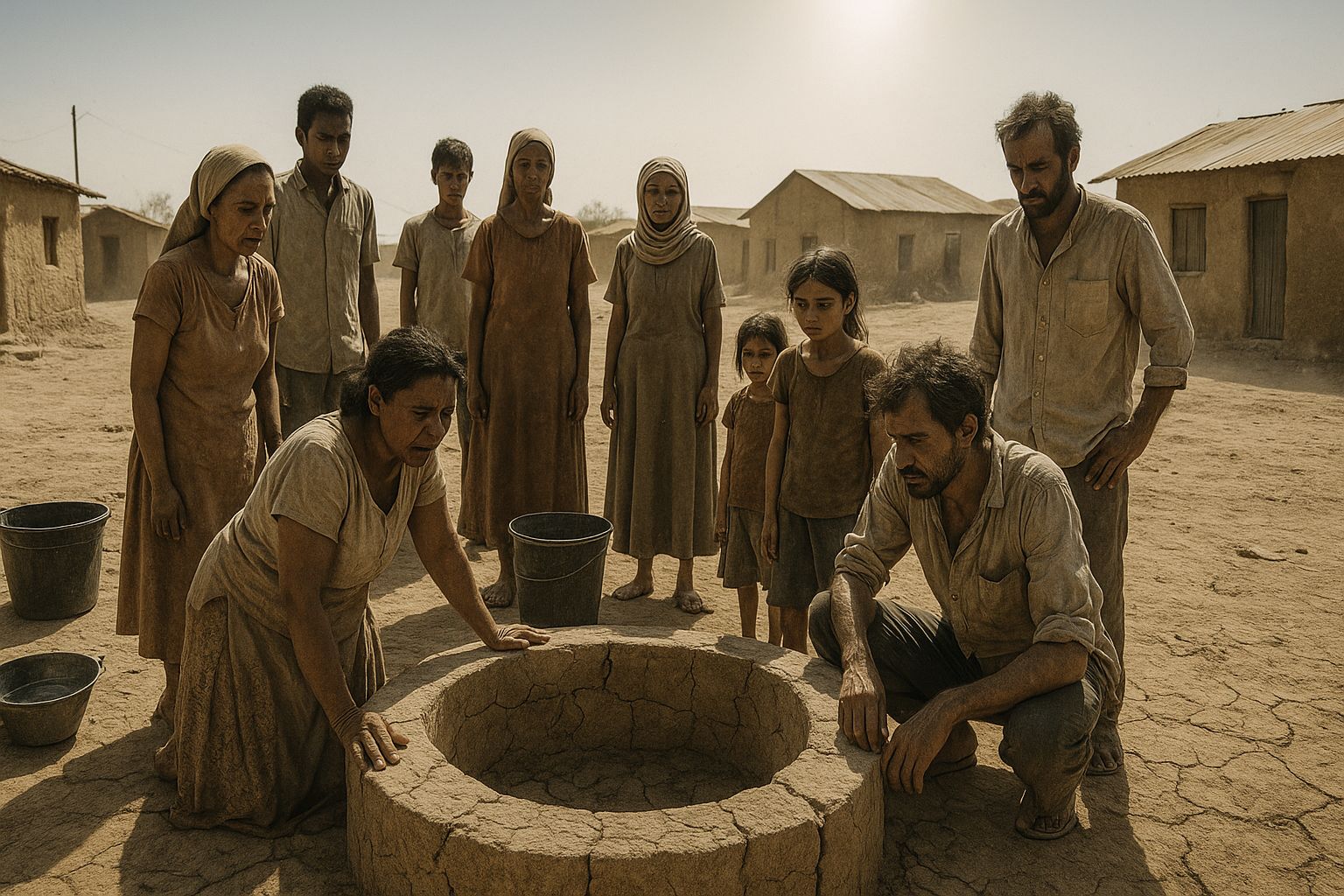- Green Glow
- Posts
- 🌱 Why the Climate Crisis Could Soon Disrupt Food, Water, and Global Stability 🌎📉
🌱 Why the Climate Crisis Could Soon Disrupt Food, Water, and Global Stability 🌎📉
The climate crisis is moving into a dangerous new phase as global warming threatens to surpass 1.5°C. Learn how rising temperatures could disrupt global food supplies, water security, and political stability, and what actions are needed to prevent widespread societal breakdown.
For decades, world leaders have attempted to prevent dangerous climate change. Yet global emissions continue to rise, and the 1.5°C limit is projected to be exceeded within the next few years. This shift marks the beginning of a new phase where climate change will not only reshape the natural environment but will also threaten the systems that sustain human life. Food production, water security, and global political stability are now facing unprecedented risks.
Table of Contents

A Planet Entering Climate Overshoot
The Paris Agreement of 2015 aimed to keep warming well below 2°C and ideally below 1.5°C. Today, that goal is no longer achievable under current trajectories.
Humanity is entering a period known as climate overshoot. This means global temperatures will rise beyond the 1.5°C threshold, likely within this decade.
Overshoot does not represent slow or manageable warming. It signals a period where:
Heatwaves increase in frequency and severity
Droughts and floods become more intense and unpredictable
Natural ecosystems lose their resilience
Once warming moves beyond 1.5°C and approaches 1.7°C or higher, the climate system becomes unstable. The effects will accelerate instead of unfolding gradually.
Food Under Threat: A Growing Global Emergency
Modern agriculture was built on the assumption of a stable climate. That stability is disappearing rapidly.
Heat Stress on Crops
Crops such as wheat, rice, maize, and soy have temperature limits. When heat exceeds these thresholds, yields drop sharply. Rising heatwaves are already reducing harvests across South Asia, North America, and Africa.
Unpredictable Rainfall Patterns
Some regions are experiencing longer dry seasons, while others face repeated floods. Farming schedules that once followed predictable seasons are now facing constant uncertainty.
Spread of Pests and Diseases
Warming temperatures allow pests and plant diseases to expand into new territories, harming crops and increasing economic losses.
If warming reaches 2°C, global agricultural yields could fall by 10 percent to 25 percent. During the same period, demand for food will continue to rise. For hundreds of millions of people, food insecurity could become permanent unless significant action is taken.
Water Security: From Scarcity to Competition
Water scarcity is expanding faster than expected and rising temperatures are accelerating the crisis.
Disappearing Glaciers and Snowpack
Billions of people depend on meltwater from mountain ranges such as the Himalayas, Andes, and Alps. As glaciers shrink, rivers that once flowed throughout the year may become seasonal.
Saltwater Intrusion
Rising sea levels are pushing seawater into coastal groundwater reserves, making drinking water and irrigation water unusable.
Intense Drought Cycles
Longer periods of drought reduce freshwater availability for households, agriculture, and industry. Competition over limited resources can increase the risk of conflict.
Regions that are already water stressed, including North Africa, the Middle East, South Asia, and the American West, are reaching critical boundaries. Access to water is becoming a source of geopolitical power and potential instability.

Instability and Conflict in a Hotter World
Climate change is not only a physical crisis. It interacts with economic inequality, political divisions, and social vulnerability. Together, these forces create a dangerous risk of instability.
Economic Shockwaves
Food shortages and water scarcity can lead to:
Rising food prices
Supply chain breakdowns
Loss of rural and agricultural income
These conditions can weaken national economies and trigger financial crises in vulnerable countries.
History shows that sudden increases in food prices and resource shortages often lead to:
Protests
Political violence
Government collapse
Climate disruption intensifies these pressures and increases the likelihood of widespread unrest.
Mass Migration
As more regions become unsafe to live in due to heat, drought, flooding, or sea level rise, millions of people will be forced to move. In extreme warming scenarios, hundreds of millions may migrate. This movement has the potential to reshape borders and international relations.
Avoiding Global Breakdown: What Must Happen Now
The situation is extremely serious, but it is not hopeless. The scale of human suffering will depend on the actions taken during the next few years.
To reduce the risk of widespread climate disruption, the world must:
Rapidly phase out fossil fuels and cut global emissions by at least 5 percent every year
Transform agriculture into a climate resilient and carbon absorbing system
Remove billions of tonnes of carbon dioxide from the atmosphere using nature and technology
Restore forests, wetlands, oceans, and ecosystems to strengthen natural carbon storage capacity
These actions cannot happen one at a time. They must happen together. Delaying one weakens the impact of all others.

Conclusion
The climate crisis is not a distant threat. It is shaping economies, societies, and ecosystems today. Technology and policy can still secure a livable future, but the window for decisive action is closing.
Humanity now faces a defining choice.
We can continue on a path that leads to irreversible damage.
Or we can mobilize at a global level to reduce overshoot and protect the systems that allow societies to thrive.
The decision belongs to us and to this generation. Future generations will live with the consequences of what we choose right now.
FAQs
How could climate change disrupt global food supplies?
Rising temperatures, unpredictable rainfall, increased droughts, and the spread of pests and crop diseases all threaten food production. Staple crops like wheat, rice, and maize become less productive under extreme heat, which can lead to rising food prices and food shortages.
Why is water security at risk due to climate change?
Melting glaciers, changing precipitation patterns, saltwater contamination of groundwater, and prolonged droughts are reducing reliable access to freshwater. Billions of people depend on water sources that are becoming unstable or depleted.
Yes. Climate-driven food shortages, water scarcity, and economic stress can trigger protests, migration, civil conflict, and government breakdown. Regions with weak infrastructure or political tension are at greater risk.
Are these impacts already happening?
Yes. Many regions are already experiencing extreme heatwaves, crop failures, water shortages, and climate-driven migration. Without rapid action, these disruptions are expected to intensify and expand globally.
Is it too late to prevent catastrophic outcomes?
It is not too late to reduce harm. While the world is likely to exceed the 1.5°C warming limit, rapid action can still prevent the most extreme scenarios. This requires accelerating the transition away from fossil fuels, transforming agriculture, restoring natural ecosystems, and scaling up carbon removal.
You May Also Like
External Links
Follow Us:
X: https://www.x.com/greenglownews
Youtube: https://www.youtube.com/@greenglownews
Instagram: https://www.instagram.com/greenglownews
Sponsored Links
Social and Political Unrest